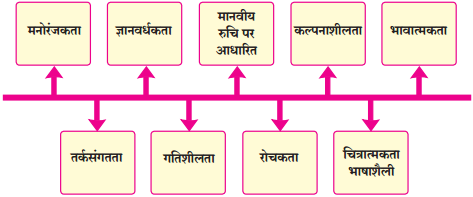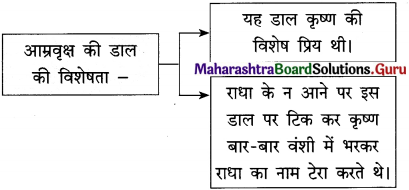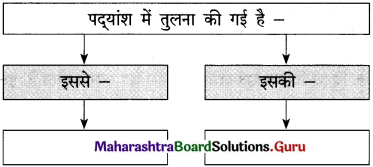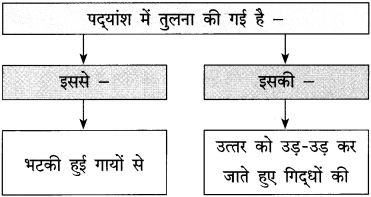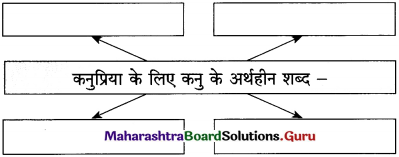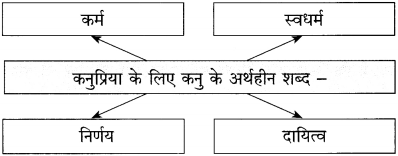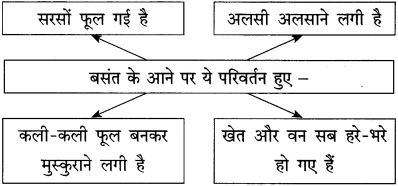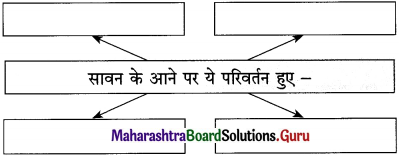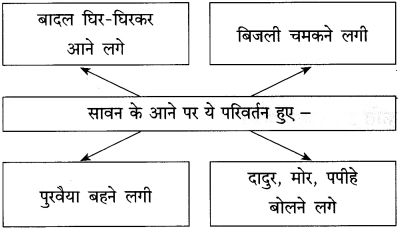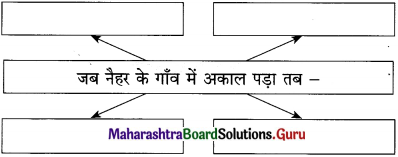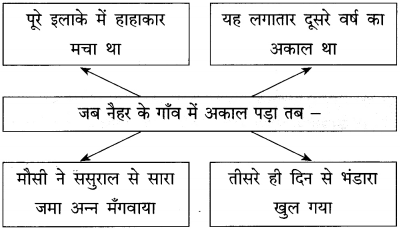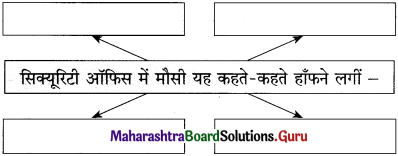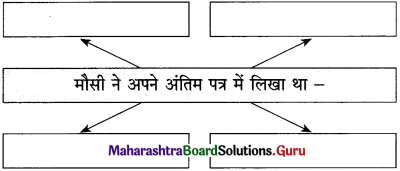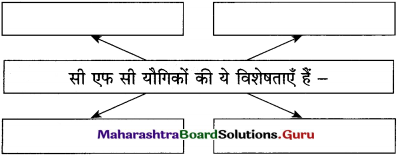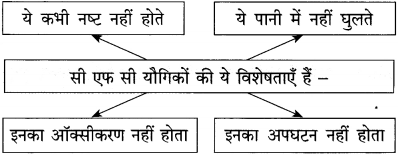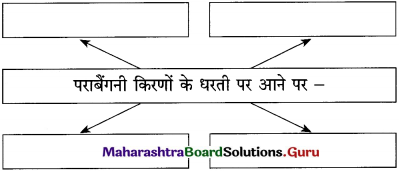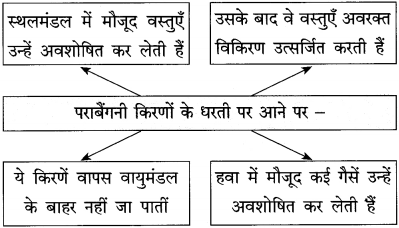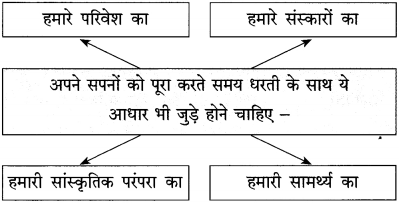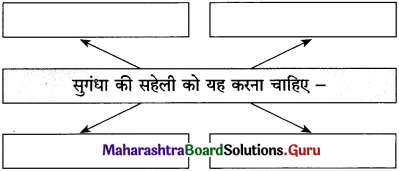Std 12 Hindi Chapter 17 Blog Lekhan Question Answer Maharashtra Board
Balbharti Maharashtra State Board Hindi Yuvakbharati 12th Digest Chapter 17 ब्लॉग लेखन Notes, Textbook Exercise Important Questions and Answers.
Hindi Yuvakbharati 12th Digest Chapter 17 ब्लॉग लेखन Questions And Answers
12th Hindi Guide Chapter 17 ब्लॉग लेखन Textbook Questions and Answers
कृति-स्वाध्याय एवं उत्तर
पाठ पर आधारित
प्रश्न 1.
ब्लॉग लेखन से तात्पर्य।
उत्तर :
ब्लॉग अपना विचार, अपना मत व्यक्त करने का एक डिजिटल माध्यम है। ब्लॉग के माध्यम से हम जो कुछ कहना चाहते हैं, उसके लिए किसी से अनुमति लेने की आवश्यकता नहीं होती। ब्लॉग लेखन में शब्द संख्या का बंधन नहीं होता। हम अपनी बात को जितना विस्तार देना चाहें, दे सकते हैं।
![]()
डिजिटल माध्यम हैं। ब्लॉग, वेबसाइट, पोर्टल आदि अखबार, पत्रिका या पुस्तक हाथ में लेकर पढ़ने के स्थान पर उसे कंप्यूटर, टैब या सेलफोन पर पढ़ना डिजिटल माध्यम कहलाता है। इसके कारण लेखक और पत्रकार भी ग्लोबल हो गए हैं। इस माध्यम के द्वारा पूरी दुनिया की कोई भी जानकारी क्षण भर में ही परदे पर उपलब्ध हो जाती है। नवीन वाचकों की संख्या मुद्रित माध्यम के वाचकों से बहुत अधिक है। इस वर्ग में युवा वर्ग अधिक संख्या में हैं।
जस्टीन हॉल ने सन 1994 में सबसे पहले इस शब्द का प्रयोग किया। जॉन बर्गर ने इसके लिए वेब्लॉग शब्द का प्रयोग किया था। माना जाता है कि 1999 में पीटर मेरहोल्स ब्लॉग शब्द को प्रस्थापित कर उसे व्यवहार में लाए। भारत मे 2002 के बाद ब्लॉग लेखन आरंभ हुआ और देखते-देखते यह माध्यम लोकप्रिय हो गया। साथ ही इसे अभिव्यक्ति के नए माध्यम के रूप में मान्यता भी प्राप्त हुई।
प्रश्न 2.
ब्लॉग प्रारंभ करने की प्रक्रिया।
उत्तर :
यह एक टेक्निकल अर्थात तकनीकी प्रक्रिया है। इसके लिए डोमेन अर्थात ब्लॉग के शीर्षक को रजिस्टर्ड कराना होता है। इसके बाद उसे किसी सर्वर से जोड़ना पड़ता है। उसमें अपनी विषय सामग्री समाविष्ट करके हम इस माध्यम का प्रयोग कर सकते हैं। भारत में 2002 के बाद ब्लॉग लेखन आरंभ हुआ और देखतेदेखते यह माध्यम लोकप्रिय हो गया। साथ ही इसे अभिव्यक्ति के नए माध्यम के रूप में मान्यता भी प्राप्त हुई।
विज्ञापन, फेसबुक, वॉट्सऐप, एस एम एस आदि द्वारा इसका प्रचार होता है। आकर्षक चित्रों, छायाचित्रों के साथ विषय सामग्री यदि रोचक हो तो पाठक ब्लॉग की प्रतीक्षा करता है और उसका नियमित पाठक बन जाता है। ब्लॉग लेखक के पास लोगों से संवाद स्थापित करने के लिए बहुत-से विषय होने चाहिए। विपुल पठन, चिंतन तथा भाषा का समुचित ज्ञान होना आवश्यक है। भाषा सहज और प्रवाहमयी हो तो पाठक उसे पढ़ना चाहेगा।
साथ ही लेखक के पास विषय से संबंधित संदर्भ, घटनाएँ और यादें हों तो ब्लॉग पठनीय होगा। जिस क्षेत्र या जिस विख्यात व्यक्ति के संदर्भ में आप लिख रहे हैं, उस व्यक्ति से आपका संबंध कैसे बना? किसी विशेष भेंट के दौरान उस व्यक्ति ने आपको कैसे प्रभावित किया? यदि वह व्यक्ति आपके निकटस्थ परिचितों में है तो उसकी सहृदयता, मानवता आदि से संबंधित कौन-सा पहलू आपकी स्मृति में रहा। ऐसे अनेक विषय शब्दांकित किए जा सकते हैं।
प्रश्न 3.
ब्लॉग लेखन में बरतनी जाने वाली सावधानियों पर प्रकाश डालिए।
उत्तर :
ब्लॉग लेखन के विषय का चुनाव करते समय सूझबूझ का होना आवश्यक है।
- ब्लॉग लेखन में इस बात का ध्यान रखना पड़ता है कि उसमें मानक भाषा का प्रयोग हो। व्याकरणिक अशुद्धियाँ न हों।
- ब्लॉग लेखन के लिए प्राप्त स्वतंत्रता का उचित उपयोग करना चाहिए। लेखन की स्वतंत्रता से हमें यह नहीं समझना चाहिए कि हम कुछ भी लिख सकते हैं।
- ब्लॉग लेखन में सामाजिक स्वास्थ्य का विचार हो। वह समाज विघातक न हो। ब्लॉग लेखक को किसी की निंदा करना, किसी पर गलत टिप्पणी करना, समाज में तनाव की स्थिति उत्पन्न करना आदि बातों से दूर रहना चाहिए।
- ब्लॉग लेखन में आक्रामकता से अर्थात गाली-गलौज अथवा अश्लील शब्दों के प्रयोग से बचना चाहिए। कोई भी पाठक ऐसी भाषा को पसंद नहीं करता। …
- बिना सबूत के किसी पर आरोप लगाना गंभीर अपराध है।
- पाठक ऐसे लेखकों की बात गंभीरता से नहीं पढ़ते। परिणामस्वरूप ब्लॉग की आयु अल्प हो जाती है।
- ब्लॉग लेखन में सामाजिक संकेतों का पालन आवश्यक है।
- ब्लॉग लेखन करते समय छोटी-छोटी बातों का ध्यान रखा जाए तो पाठक ही हमारे ब्लॉग के प्रचारक बन जाते हैं।
![]()
व्यावहारिक प्रयोग
प्रश्न 1.
अपने शहर की विशेषताओं पर ब्लॉग लेखन कीजिए।
उत्तर :
मैं महाराष्ट्र के नाशिक जिले में रहता हूँ। यह महाराष्ट्र का एक छोटा शहर है। यह नाशिक-पुणे राजमार्ग पर स्थित है। यह एक सुंदर व आदर्श शहर है। यहाँ की इमारतें भव्य और दर्शनीय हैं।
शहर की जनसंख्या :
यह एक घना बसा हुआ नगर है। इसमें लगभग एक लाख लोग रहते हैं। यह मुख्य रूप से हिंदू बहुल नगर है। हिंदुओं के अतिरिक्त इसमें मुस्लिम, सिख, ईसाई आदि अन्य धर्मों के लोग भी रहते हैं। हमारे नगर के लोग बहुत अच्छे हैं। वे सदैव एक-दूसरे की मदद करने को तत्पर रहते है। यहाँ के लोगों में बहुत एकता है। सभी लोग बहुत ईमानदार और परिश्रमी हैं।
शहर का मुख्य व्यवसाय :
यहाँ के लोगों का मुख्य व्यवसाय व्यापार है। यहाँ एक बड़ी शुगर मिल है। कुछ अन्य फैक्टरियाँ भी हैं, जो बोगियों के लिए धुरे और पहिये बनाती हैं। यहाँ तीन मंडियाँ हैं, जहाँ माल के क्रय-विक्रय के लिए आस-पास से बहुत-से लोग आते हैं।
विद्यालय, कॉलेज व चिकित्सालय :
हमारा शहर शिक्षा का एक केंद्र है। यहाँ दो स्नाकतोत्तर विद्यालय और चार उच्च माध्यमिक कॉलेज हैं। हमारे जिले का एकमात्र राजकीय गर्ल्स उच्च माध्यमिक कॉलेज हमारे शहर में ही है। आस-पास के गाँवों से बहुत-से लड़केलड़कियाँ यहाँ शिक्षा प्राप्त करने आते हैं। हमारे शहर में अनेक चिकित्सालय हैं और सरकारी डिस्पेंसरी भी है।
अन्य आकर्षण :
मेरे शहर के निकट शरद पूर्णिमा को नदी के किनारे प्रत्येक वर्ष मेला लगता है। नदी के निकट एक बहुत विशाल परिसर में शिव, दुर्गा, राम, कृष्ण तथा हनुमान जी के मंदिर हैं। इस मेले में बहुत भीड़ होती है। आस-पास के गाँवों के सैंकड़ों दुकानदार कई दिन पहले से ही मेले में अपनी दुकानें सजाने लगते हैं। लोग दूर-दूर से इस मेले को देखने आते हैं। लोगों की इतनी भीड़ होती है कि तिल रखने की जगह नहीं होती। मुझे अपने शहर से बहुत प्यार है। मैं अपना संपूर्ण जीवन इसी शहर में व्यतीत करना चाहता हूँ। मुझे नहीं लगता कि किसी अन्य शहर में मैं इतनी सुख और शांति से जीवन बिता सकूँगा।
![]()
प्रश्न 2.
ग्रामीण समस्याओं पर ब्लॉग लेखन कीजिए।
उत्तर :
भारत की 70 प्रतिशत आबादी आज भी गाँवों में रहती है। अतः ग्रामीण क्षेत्रों की हालत ही हमारे देश का वास्तविक प्रतिबिम्ब है। भारतवर्ष उस गति से तरक्की नहीं कर पा रहा, जिस गति से उसे करनी चाहिए।
भारत के गाँवों में विभिन्न समस्याए :
गरीबी : 130 करोड़ लोगों के देश में लगभग 40 करोड़ लोग आज भी गरीबी रेखा के नीचे रह रहे हैं। और यह आबादी अधिकांश रूप से गाँवों में ही हैं। छोटे किसान हमेशा कर्ज से लदे रहते हैं। वे बड़े किसानों पर निर्भर रहते है। अंततः बड़ जमींदार छोटे किसानों की जमीनें हड़प लेते हैं। आबादी में वृद्धि के कारण जमीनों का बँटवारा होता जा रहा है। अतः जमीन-जायदाद के टुकड़े हो जाते हैं। छोटे टुकड़े फलदायी नहीं रहते और उनके मालिक कृषि करके घाटा उठाते हैं। जिसके कारण हालात दिनोंदिन बदतर होते जा रहे हैं।
बेरोजगारी :
ग्रामीण इलाकों में रोजगार का अभाव होने से युवाओं को चिंता में देखा जा सकता है। खेतों में अन्न और सब्जियाँ उगाने का एक निश्चित चक्र है। बीज बोकर, सिंचाई करके फसलों को उगने के लिए छोड़ दिया जाता है। ऐसे समय पर न तो किसान के पास कोई काम होता है, न ही वह अपनी फसलों को छोड़कर कहीं और काम करने जा सकता है। अतः आंशिक बेरोजगारी कृषक जीवन का अभिन्न अंग बन गई है।
सूखा और बाढ़ :
जो लोग गाँवों में रहकर खून पसीना एक करते हैं, उन पर प्राकृतिक आपदाएँ कहर ढाया करती हैं। बाढ़, सूखा, तूफानी हवाएँ ऐसी अनेक परेशानियाँ हैं, जिन पर मनुष्य का कोई वश नहीं है। कभी सूखे के कारण फसलें नष्ट हो जाती हैं। ग्रामीण भारत में इन समस्याओं के कारण परेशानी बढ़ रही हैं।
शिक्षा का अभाव :
गाँवों में शिक्षा का नितांत अभाव है। गाँव के लोग आज भी शिक्षा को जरूरी नहीं समझते। स्त्री-पुरुष सभी अशिक्षित रह जाते हैं। परिणामस्वरूप वे गरीबी के कुचक्र को नहीं तोड़ पाते, क्योंकि वे शिक्षा के माध्यम से आगे बढ़ने के सभी अवसर खो देते हैं। अपने बच्चों को भी समुचित शिक्षा नहीं दिला पाते। शिक्षा के अभाव में ग्रामीण लोग मानसिक रूप से विकसित नहीं हो पाते।
![]()
स्वास्थ्य सुविधाएँ :
ग्रामीण क्षेत्रों में स्वास्थ्य संबंधी सुविधाओं की भी कमी है। कोई भी डॉक्टर ग्रामीण इलाकों में नहीं रहना चाहता। प्राइमरी हैल्थ सेंटर्स में दी जाने वाली दवाइयाँ और डॉक्टरी परामर्श आज भी मध्ययुग जैसी हैं। ग्रामीण अपनी चिकित्सा पर अधिक खर्च नहीं कर सकते। यही कारण है कि गाँवों में झोलाछाप डॉक्टरों और दाइयों का धंधा खूब पनपता है।
ब्लॉग निर्माण की प्रक्रिया
ब्लॉग तैयार करने के लिए google में Gmail account होना आवश्यक है।
- Internet Explorer में www.blogger.com खोलिए/में जाइए।
- CREATYOUR BLOG पर क्लिक कीजिए।
- अपने Gmail : googlaccount पासवर्ड से लॉग इन कीजिए।
- नये पेज पर titl(शीर्षक) दीजिए और अपना blogger address तैयार कीजिए।
- उदा. vidya1234.blogspot.com थीम (theme) का चयन कीजिए I CREATBLOG पर क्लिक कीजिए आपका ब्लॉग तैयार होगा।
ब्लॉग लेखन : आवश्यक सावधानियाँ
- ब्लॉग लेखन के विषय का चुनाव करते समय सूझ-बूझ का होना आवश्यक है।
- ब्लॉग लेखन में सामाजिक संकेतों का पालन आवश्यक है।
- ब्लॉग लेखन में सामाजिक स्वास्थ्य का विचार हो वह समाज विघातक न हो।
- ब्लॉग लेखन के लिए प्राप्त स्वतंत्रता का उचित उपयोग करना चाहिए।
ब्लॉग लेखन Summary in Hindi
ब्लॉग लेखक का परिचय

ब्लॉग लेखन का नाम :
प्रवीण बर्दापूरकर। (जन्म : 3 सितम्बर, 1955.)
ब्लॉग लेखन प्रमुख कृतियाँ :
‘डायरी’, ‘नोंदी डायरीनंतरच्या’, ‘दिवस असे की’, ‘आई’, ‘ग्रेस नावांच गारूड’ आदि।
![]()
ब्लॉग लेखन विशेषता :
प्रवीण बर्दापूरकर राजनीतिक, सामाजिक, आर्थिक तथा सांस्कृतिक क्षेत्रों का गहराई से अध्ययन करने वाले तथा उन्हें समझने वाले निर्भीक पत्रकार के रूप में सुपरिचित हैं। आपने पत्रकारिता के क्षेत्र में ब्लॉग लेखन को बहुत ही लोकप्रिय बनाया है।
प्रवीण जी ने ब्लॉग द्वारा बदलते सामाजिक विषयों को परिभाषित करते हुए जनमानस की विचारधारा को नयी दिशा प्रदान की है। सीधी-सादी, रोचक और संप्रेषणीय मराठी और हिंदी भाषा में लिखे गए ब्लॉग आपके धर्मनिरपेक्ष दृष्टिकोण की पुष्टि करते हैं।
ब्लॉग लेखन विषय प्रवेश :
आधुनिक समय में पत्रकारिता के क्षेत्र में ब्लॉग लेखन का प्रचलन लोकप्रिय बनता जा रहा है। प्रस्तुत पाठ में लेखक ने ब्लॉग लिखने के नियम, ब्लॉग का स्वरूप और उसके वैज्ञानिक पक्ष की चर्चा करते हुए उसके महत्त्व को स्पष्ट किया है। ब्लॉग लेखन जहाँ एक ओर सामाजिक जागरण का माध्यम बन चुका है, वहीं पत्रकारिता के जीवित तत्त्व के रूप में भी स्वीकृत हुआ है तथा बड़ा ही लोकप्रिय माध्यम बन चुका है।
ब्लॉग लेखन पाठ का सार
ब्लॉग लेखन से तात्पर्य :
ब्लॉग अपना विचार, अपना मत व्यक्त करने का एक डिजिटल माध्यम है। ब्लॉग के माध्यम से हम जो कुछ कहना चाहते हैं, उसके लिए किसी से अनुमति लेने की आवश्यकता नहीं होती। ब्लॉग लेखन में शब्द संख्या का बंधन नहीं होता। हम अपनी बात को जितना विस्तार देना चाहें, दे सकते हैं।
ब्लॉग, वेबसाइट, पोर्टल आदि डिजिटल माध्यम हैं। अखबार, पत्रिका या पुस्तक हाथ में लेकर पढ़ने के स्थान पर उसे कंप्यूटर, टैब या सेलफोन पर पढ़ना डिजिटल माध्यम कहलाता है। इस प्रकार का वाचन करने वाली

पीढ़ी का निर्माण इंटरनेट के महजाल के कारण हुआ है। इसके कारण लेखक और पत्रकार भी ग्लोबल हो गए हैं। नवीन वाचकों की संख्या मुद्रित माध्यम के वाचकों से बहुत अधिक है। इस वर्ग में युवा वर्ग अधिक संख्या में है। इस माध्यम के द्वारा पूरी दुनिया की कोई भी जानकारी क्षण भर में ही परदे पर उपलब्ध हो जाती है।
ब्लॉग की खोज :
ब्लॉग की खोज के संबंध में निश्चित रूप से कोई डॉक्युमेंटेशन उपलब्ध नहीं है, पर जो जानकारी उपलब्ध है, उसके अनुसार जस्टीन है हॉल ने सन 1994 में सबसे पहले इस शब्द का प्रयोग किया। जॉन बर्गर ने इसके लिए वेब्लॉग शब्द का प्रयोग किया था। माना जाता है कि 1999 में पीटर मेरहोल्स ब्लॉग शब्द को प्रस्थापित कर उसे व्यवहार में लाए। भारत मे 2002 के बाद ब्लॉग लेखन आरंभ हुआ और देखते-देखते यह माध्यम लोकप्रिय हो गया।
साथ ही इसे अभिव्यक्ति के नए माध्यम के रूप में मान्यता भी प्राप्त हुई।
![]()
ब्लॉग लेखन शुरू करने की प्रक्रिया :
यह एक टेक्निकल अर्थात तकनीकी प्रक्रिया है। इसके लिए है डोमेन अर्थात ब्लॉग के शीर्षक को रजिस्टर्ड कराना होता है। इसके बाद उसे किसी सर्वर से जोड़ना पड़ता है। उसमें अपनी विषय सामग्री समाविष्ट करके हम इस माध्यम का प्रयोग कर सकते हैं। इस संदर्भ में विस्तृत जानकारी ‘गूगल’ पर उपलब्ध है। कुछ विशेषज्ञ इस संदर्भ में सशुल्क सेवाएँ देते हैं।
ब्लॉग लेखक के लिए आवश्यक गुण :
ब्लॉग लेखक के पास लोगों से संवाद स्थापित करने के लिए बहुत-से विषय होने चाहिए। विपुल पठन, चिंतन तथा भाषा का समुचित ज्ञान होना आवश्यक है। भाषा सहज और प्रवाहमयी हो तो पाठक उसे पढ़ना चाहेगा। साथ ही लेखक के पास विषय से संबंधित संदर्भ, घटनाएँ और यादें हों तो ब्लॉग पठनीय होगा। जिस क्षेत्र या जिस विख्यात व्यक्ति के संदर्भ में आप लिख रहे हैं, उस व्यक्ति से आपका संबंध कैसे बना?
किसी विशेष भेंट के दौरान उस व्यक्ति ने आपको कैसे प्रभावित किया? यदि वह व्यक्ति आपके निकटस्थ परिचितों में है तो उसकी सहृदयता, मानवता आदि से संबंधित कौन-सा पहलू आपकी स्मृति में रहा। ऐसे अनेक विषय शब्दांकित किए जा सकते हैं।
ब्लॉग लेखन में विषय में आशय की गहराई आवश्यक है। प्रवाहमयी कथन शैली, सीधी-सादी और सहज भाषा का प्रयोग किया जाए, तो पाठक विषय सामग्री से शीघ्र ही एकरूप हो जाता है। ब्लॉग लेखन में क्लिष्ट शब्दों के प्रयोग से बचना चाहिए। उचित विशेषणों का प्रयोग भाषा को सुंदरता प्रदान करता हैं और पाठक इसकी ओर आकर्षित होता है। भाषा केवल शब्दों का समूह ही नहीं होता, बल्कि प्रत्येक शब्द का एक विशिष्ट अर्थ होता है।
सहज-सरल होने के साथ-साथ भाषा का बाँकपन ब्लॉग लेखन की गरिमा को बढ़ाता है। किसी भी शैली का विकास एक दिन में नहीं हो जाता। सतत लेखन के द्वारा ही यह संभव है। जिस प्रकार एक गायक प्रतिदिन रियाज करके राग और बंदिश में निपुण हो पाता है, उसी प्रकार निरंतर लेखन से लेखक की एक शैली विकसित होती है और पाठक को प्रभावित करती है।
ब्लॉग लेखन में आवश्यक सावधानियाँ :
ब्लॉग लेखन में इस बात का ध्यान रखना पड़ता है कि उसमें मानक भाषा का प्रयोग हो। व्याकरणिक अशुद्धियाँ न हों। ब्लॉग लेखन के लिए प्राप्त स्वतंत्रता का उचित उपयोग करना चाहिए। लेखन की स्वतंत्रता से हमें यह नहीं समझना चाहिए कि हम कुछ भी लिख सकते हैं।
आक्रामकता का अर्थ गाली-गलौज अथवा अश्लील शब्दों का प्रयोग करना नहीं है। पाठक ऐसी भाषा को पसंद नहीं करते। ब्लॉग लेखक को किसी की निंदा करना, किसी पर गलत टिप्पणी करना, समाज में तनाव की स्थिति उत्पन्न करना है आदि बातों से दूर रहना चाहिए। बिना सबूत के किसी पर आरोप लगाना एक गंभीर अपराध है। पाठक ऐसे लेखकों की बात गंभीरता से नहीं पढ़ते। परिणामस्वरूप ब्लॉग की आयु अल्प हो जाती है।
ब्लॉग लेखन करते समय छोटी-छोटी बातों का ध्यान रखा जाए तो पाठक ही हमारे ब्लॉग के प्रचारक बन जाते हैं। एक पाठक दूसरे से और दूसरा तीसरे से सिफारिश करता है और पाठकों की श्रृंखला बढ़ती चली जाती है।
![]()
ब्लॉग लेखन का प्रसार :
ब्लॉग लेखक अपने ब्लॉग का प्रचार-प्रसार स्वयं कर सकता है। विज्ञापन, फेसबुक, वॉट्सऐप, एस एम एस आदि द्वारा इसका प्रचार होता है। आकर्षक चित्रों, छायाचित्रों के साथ विषय सामग्री यदि रोचक हो तो पाठक ब्लॉग की प्रतीक्षा करता है और उसका नियमित पाठक बन जाता है।
ब्लॉग लेखन से आर्थिक लाभ : ब्लॉग लेखन से आर्थिक लाभ भी होता है। विशेष रूप से हिंदी और अंग्रेजी ब्लॉग लेखन का पाठक वर्ग व्यापक होने के कारण इससे अच्छी आय होती हैं। विद्यार्थी अपने अनुभव तथा विचार ब्लॉग लेखन द्वारा साझे कर सकते हैं।
प्रत्येक विद्यार्थी अपनी जीवन शैली, अपना संघर्ष, अपनी सफलताएँ विभिन्न रूपों में अभिव्यक्त कर सकता है। राजनीतिक विषयों के लिए अच्छा प्रतिसाद मिल सकता है। शिक्षा विषयक ब्लॉग पढ़ने वाला पाठक वर्ग बहुत बड़ा है। यात्रा वर्णन, आत्मकथात्मक तथा विश्व से जुड़े जीवन की प्रेरणा देने वाले विषय भी बड़े चाव से पढ़े जाते हैं।
ब्लॉग लेखन शब्दार्थ
| वाचक | पाठक। |
| मुद्रित | छपा हुआ। |
| उपलब्ध | प्राप्त। |
| प्रस्थापित | स्थापित किया हुआ। |
| अभिव्यक्ति | घोषणा। |
| मान्यता | स्वीकृति। |
| समाविष्ट | जिसका समावेश किया गया हो। |
| संदर्भ | विषय। |
| संवाद | बातचीत। |
| चिंतन | मनन करना। |
| समुचित | उचित। |
| प्रवाहमयी | गतिशील। |
| विख्यात | प्रसिद्ध। |
| निकटस्थ | समीप का। |
| सहृदय | दयालु। |
| शब्दांकित | शब्दों द्वारा अंकित किया हुआ। |
| आशय | अभिप्राय। |
| मापदंड | वह कारक, जिसके द्वारा कोई निर्णय लेता है। |
| क्लिष्ट | कठिन। |
| सटीक | उचित। |
| सौष्ठव | सुंदरता। |
| बाँकपन | सजावट। |
| सतत | निरंतर। |
| रियाज | अभ्यास। |
| बंदिश | रचना। |
| तात्पर्य | अर्थ। |
| आक्रामकता | प्रचंडता। |
| अश्लील | लज्जाजनक। |
| टिप्पणी | आलोचना। |
| अल्प | छोटी। |
| सिफारिश | किसी के गुणों का दूसरों के सामने बखान करना। |
| श्रृंखला | कड़ी। |
| प्रचार-प्रसार | फैलाव। |
| रोचक | रुचि उत्पन्न करने वाला। |
| प्रतिसाद | किसी कार्य के लिए मिलने वाली सकारात्मक प्रतिक्रिया। |
| आत्मकथात्मक | आपबीती भरा। |
12th Commerce ka Hindi Book Pdf Maharashtra Board
- चुनिंदा शेर Class 12 Hindi Textbook Solutions
- ओजोन विघटन का संकट Class 12 Hindi Textbook Solutions
- कोखजाया Class 12 Hindi Textbook Solutions
- लोकगीत Class 12 Hindi Textbook Solutions
- कनुप्रिया Class 12 Hindi Textbook Solutions
- पल्लवन Class 12 Hindi Textbook Solutions
- फीचर लेखन Class 12 Hindi Textbook Solutions
- मैं उद्घोषक Class 12 Hindi Textbook Solutions
- ब्लॉग लेखन Class 12 Hindi Textbook Solutions
- प्रकाश उत्पन्न करने वाले जीव Class 12 Hindi Textbook Solutions



